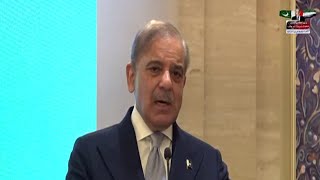Amidst loud protests by the Opposition the Punjab Finance Minister Mujtaba Shujaur Rehman shouted the seventh year economic vision of the Shahbaz Sharif government with ear plugs on to drown out the noise. He announced a 345 billion rupee ambitious outlay for development (only 14 billion rupees higher than what federal government budget documents for 2014-15 indicated) - not comparing too favourably with the 2013-14 budgeted total of 319 billion rupees but rather favourably with the 180.4 billion rupees revised estimates for the year according to federal budget's documents. Given that it was Punjab that enabled Federal Finance Minister Ishaq Dar to show a budget deficit of 5.8 percent in 2013-14, mainly attributable to the slash in the province's Annual Development Programme (ADP), the federal government's provincial surplus target of 289 billion rupees for 2014-15, if largely met by Punjab again in the forthcoming fiscal year as is likely, would disable it from meeting its ambitious ADP in yet another year. Or in other words, the people of Punjab would pay price for the PML-N's government in the centre.
What is, however, extremely unfortunate about the Punjab budget is the fact that it appears to mirror the federal budget: (i) it overstates the growth rate at 5.5 percent (higher than indicated in the federal budget by 0.4 percent though one would assume the premise is that other provinces are not likely to grow as fast bringing the national average down), (ii) it overstates development expenditure to show a greater commitment to social and infrastructure development, (iii) it envisages an increase in provincial revenue based on heavier reliance on advance taxes (for example, on cars and plots/buildings size) that would not increase documentation, which is the need of the hour and a farm tax that would not be commensurate with income tax payable by the salaried and the corporate sector, and (iv) its enhanced reliance on foreign project assistance.
The budget speech, however, notes some commendable allocation adjustments within different sectors in the ADP, which may reflect the tacit acknowledgement by the Shahbaz Sharif government that the opposition, notably the Pakistan Tehreek-e-Insaaf (PTI), is making some inroads into its electoral base given the party's pro-poor policies with respect to sectoral allocations. Thus the budget announcement that the next fiscal year's budget envisages the largest chunk (14 percent of total) to education which, in total terms, is 48.23 billion rupees with the highest allocation for new school education projects, energy 31 billion rupees (though roads, a pet project of the Sharif family, budgeted to receive 31.5 billion rupees), and 136 billion rupees to be earmarked for the South of Punjab are the fruits of democracy and must be lauded.
The provincial revenue target has been increased by a whopping 44.5 billion rupees for 2014-15 in comparison to the current year (with the final revenue figures yet to be released for the current year) though the revenue measures do not justify the projected rise in revenue. The Punjab Finance Minister indicated that sales tax on services would be increased by bringing in ten new services under the tax net including specialised workshops, repair and maintenance, indenting/brokerage, call centres, lab services (other than diagnostic and pathological tests), physical fitness services, laundry and dry cleaning, cable TV/radio and print media advertisements. Sales tax is passed on in its entirety onto the consumers, however, it remains to be seen how many of these ten sectors would successfully negotiate with the government to either defer the tax or to reduce it - a common enough practice in the past. And of course there is the danger that the federal government would be unable to generate the budgeted divisible pool taxes for another year, implying lower transfers to provinces, which would have repercussions on the revenue base of all provinces including Punjab.
But the most significant measure in terms of revenue generation is the Punjab government's intent to levy an infrastructure development cess on goods destined for exports or those imported and passing through Punjab. While this cess may lead many to think of the federally-imposed gas development infrastructure cess (GIDC) yet for a provincial government to impose a tax and on exports as well as imports may be challenged by the federal government as it would negatively impact on exports and on productivity reliant on imported raw material with of course an in-built inflationary impact.
To conclude the Punjab budget was disappointing as it relied on several of the flawed policy proposals included in the federal budget but at the same time development allocations reflect politically induced priorities which must be supported, however, they may not be met if the Punjab government is compelled to trim expenditure dramatically by the federal government to allow Dar to show that the budget deficit target is met.
BR100
7,841
Increased By
30.9 (0.4%)
BR30
25,465
Increased By
315.4 (1.25%)
KSE100
75,114
Increased By
157.8 (0.21%)
KSE30
24,114
Increased By
30.8 (0.13%)






















Comments
Comments are closed.